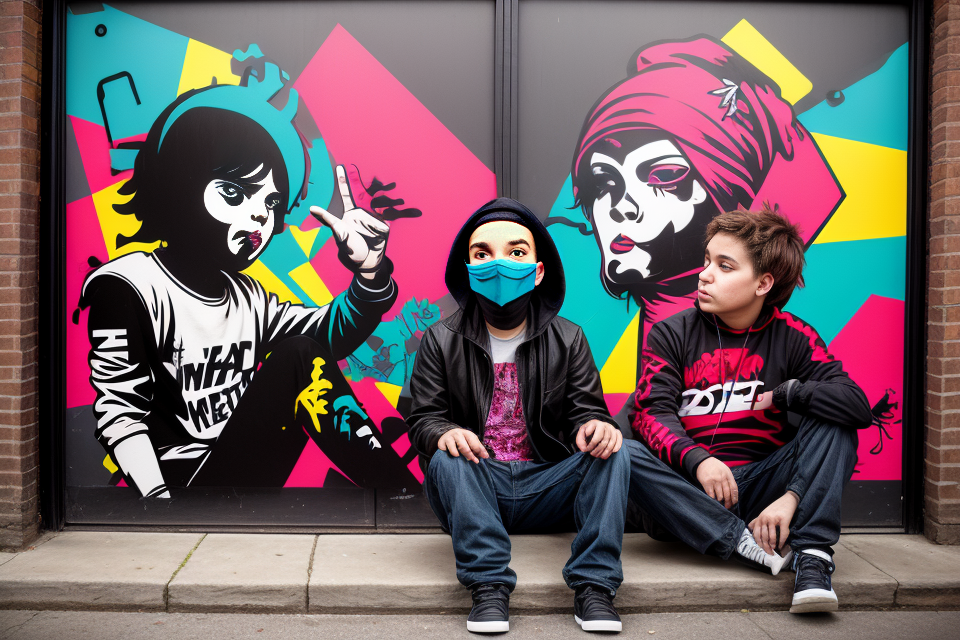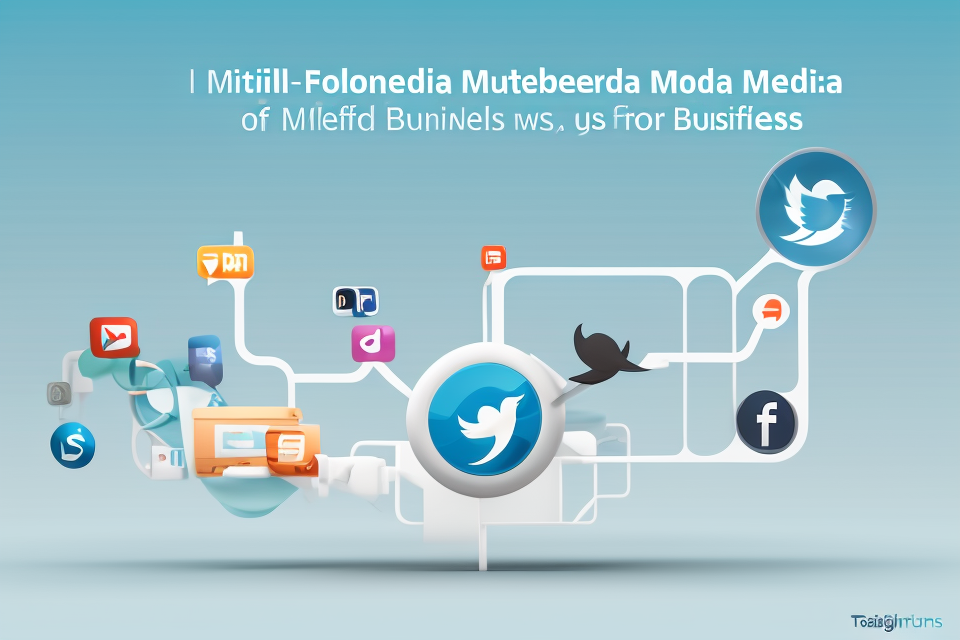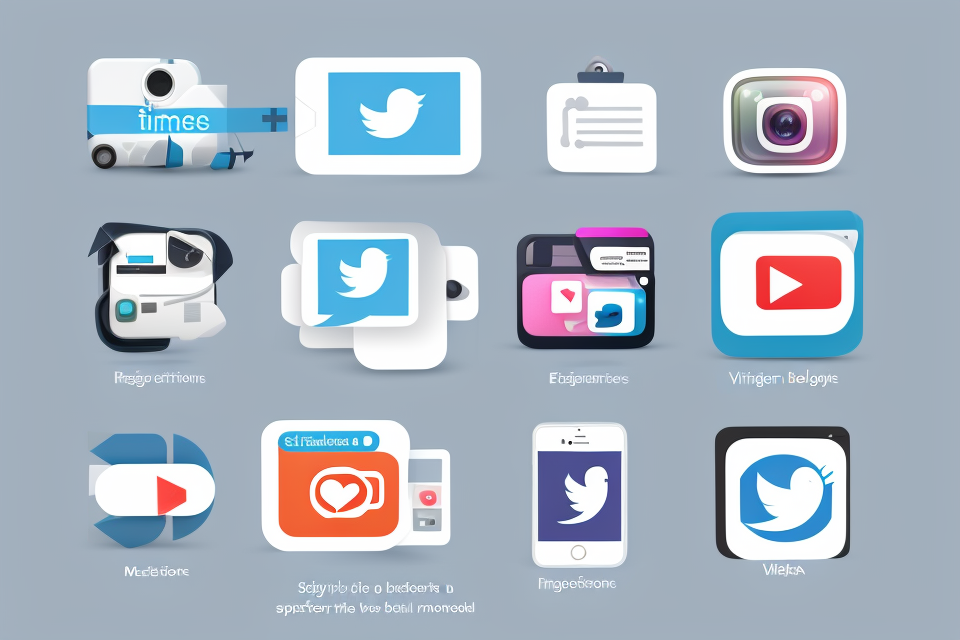Social media has become an integral part of our lives, connecting us with people from all over the world. However, there is a dark side to social media that is often overlooked. This article explores the reasons why social media can be a bad thing, from the spread of misinformation to the negative impact on mental health. We will delve into the potential dangers of social media and examine whether it is truly a blessing or a curse.
The Rise of Social Media and Its Impact on Society
The Positive Side of Social Media
- Connecting people across the globe
- Social media has revolutionized the way people connect and communicate with each other, regardless of geographical location. It has made it possible for individuals to build relationships and networks that transcend physical boundaries, thereby enabling people to connect with others from different cultures and backgrounds.
- Facilitating communication and self-expression
- Social media has provided individuals with a platform to express themselves freely and openly. It has enabled people to share their thoughts, opinions, and ideas with a wider audience, and has given voice to those who may not have had the opportunity to express themselves in the past. Additionally, social media has made it easier for people to communicate with each other in real-time, making it an essential tool for personal and professional communication.
- Creating new opportunities for businesses and entrepreneurs
- Social media has created new opportunities for businesses and entrepreneurs to reach a wider audience and promote their products and services. It has provided a cost-effective way for businesses to market their products and services, connect with customers, and build their brand. Additionally, social media has enabled entrepreneurs to create and grow their businesses by connecting with potential customers, partners, and investors.
The Negative Side of Social Media
Addiction and Mental Health Issues
Social media addiction has become a significant concern in recent years. According to a study conducted by the University of California, individuals who spend more time on social media platforms are more likely to experience symptoms of depression and anxiety. The constant need for validation and the fear of missing out (FOMO) can lead to feelings of inadequacy and low self-esteem. Furthermore, the blue light emitted by electronic devices can disrupt sleep patterns, exacerbating mental health issues.
Cyberbullying and Online Harassment
Cyberbullying has become a prevalent issue on social media platforms. It involves the use of social media to harass, intimidate, or harm others. Victims of cyberbullying may experience a range of negative emotions, including fear, anger, and shame. This can lead to a decline in mental health and even self-harm or suicidal ideation in severe cases. Moreover, online harassment can extend beyond social media platforms, with trolls and cyberstalkers using these platforms to target individuals.
Spreading Misinformation and Fake News
Social media has become a breeding ground for misinformation and fake news. With the ease of sharing information, false claims and conspiracy theories can spread rapidly, leading to widespread confusion and panic. This has significant implications for public health, as misinformation about vaccines or healthcare can lead to harmful practices. Additionally, the spread of fake news can influence political opinions and even result in social unrest. In response to these concerns, social media platforms have implemented policies to combat misinformation, but the issue remains a significant challenge.
The Dark Side of Social Media: Addiction and Mental Health
Understanding Social Media Addiction
- Compulsive behavior and its effects on the brain
Social media addiction, also known as “internet addiction” or “compulsive internet use,” is a behavioral addiction that involves an uncontrollable urge to use the internet, often for extended periods. This compulsive behavior can lead to a decrease in personal hygiene, a neglect of daily responsibilities, and a negative impact on interpersonal relationships.
Research has shown that compulsive internet use can cause changes in the brain’s reward system, leading to feelings of pleasure and satisfaction when using the internet. This can create a vicious cycle where individuals continue to use the internet excessively in order to experience these feelings of pleasure and satisfaction.
- Comparison and envy on social media platforms
Social media platforms such as Instagram and Facebook can contribute to feelings of inadequacy and low self-esteem due to the prevalence of curated, idealized images and the constant comparison to others. This can lead to feelings of envy and jealousy, as individuals compare their lives to the highlight reels of others.
Research has shown that comparing oneself to others on social media can lead to decreased self-esteem, increased anxiety, and depression. Additionally, the constant comparison to others can create a sense of dissatisfaction with one’s own life, leading to a never-ending cycle of comparison and envy.
- The role of social media in the rise of anxiety and depression
The constant bombardment of information and stimuli on social media can contribute to feelings of anxiety and stress. Additionally, the constant comparison to others and the pressure to maintain an idealized online persona can lead to feelings of inadequacy and low self-esteem, contributing to the development of anxiety and depression.
Research has shown that social media use can contribute to the development of anxiety and depression, particularly in adolescents and young adults. The constant comparison to others, the pressure to maintain an idealized online persona, and the constant bombardment of information and stimuli can all contribute to the development of these mental health conditions.
The Mental Health Toll of Social Media
The use of social media has been linked to various mental health issues, including anxiety, depression, and low self-esteem. Some of the reasons for this link include:
- Cyberbullying and online harassment: Social media platforms have become breeding grounds for cyberbullying and online harassment, leading to a rise in mental health issues such as anxiety and depression. Cyberbullying involves the use of social media to harass, intimidate, or belittle individuals, leading to feelings of fear, anxiety, and low self-esteem.
- Low self-esteem: Social media can create unrealistic expectations of beauty and perfection, leading to low self-esteem. People tend to compare their lives to the curated highlight reels of others on social media, which can lead to feelings of inadequacy and low self-worth.
- Sleep disturbances: The constant notifications and alerts from social media apps can disrupt sleep patterns, leading to insomnia and other sleep-related issues. Lack of sleep can have a significant impact on mental health, leading to irritability, mood swings, and anxiety.
- Fear of missing out (FOMO): Social media can create a sense of FOMO, leading to anxiety and stress. People may feel like they are missing out on important events or experiences because they are not on social media, leading to feelings of exclusion and isolation.
It is essential to be aware of these mental health risks associated with social media use and take steps to mitigate them. This may include setting limits on social media use, taking breaks from social media, and engaging in activities that promote mental well-being, such as exercise, meditation, and spending time with loved ones.
Cyberbullying and Online Harassment on Social Media
The Prevalence of Cyberbullying
- Cyberbullying is a growing concern among parents, educators, and mental health professionals. It is the use of technology to harass, intimidate, or threaten individuals, often with the intention of causing harm or distress. Cyberbullying can take many forms, including:
- Online harassment, which involves the use of electronic communication to intimidate, insult, or threaten individuals. This can include emails, text messages, or posts on social media platforms.
- Impersonation, which involves creating fake accounts or profiles to pretend to be someone else in order to spread rumors, lies, or hate speech.
- Outing, which involves sharing personal information or embarrassing photos of someone without their consent.
- Cyberbullying can have serious consequences for young people. Victims of cyberbullying may experience anxiety, depression, and low self-esteem. They may also have difficulty trusting others or forming healthy relationships. In extreme cases, cyberbullying can lead to suicide.
- Bystanders can play an important role in preventing cyberbullying. By standing up to bullies, reporting inappropriate behavior, and supporting victims, bystanders can help create a safer and more positive online environment. However, many bystanders are unsure of how to intervene in cyberbullying situations, and may even contribute to the problem by sharing or liking posts that perpetuate the behavior.
Strategies for Combating Cyberbullying
Education and awareness campaigns
Education and awareness campaigns are essential in combating cyberbullying. These campaigns can help individuals understand what cyberbullying is, its impact on the victim, and the various forms it can take. By raising awareness, individuals can better recognize and respond to cyberbullying when they encounter it. This can include educating children and teenagers in schools, as well as adults in the workplace.
Social media platform policies and reporting tools
Social media platforms have a responsibility to establish policies that prohibit cyberbullying and provide tools for users to report incidents. These policies should clearly define what behavior is unacceptable and the consequences for violating them. Reporting tools should be user-friendly and accessible, allowing victims to easily report incidents of cyberbullying. Platforms should also have a process in place for investigating and taking appropriate action against those who engage in cyberbullying behavior.
Empowering victims to speak out and seek help
Victims of cyberbullying often feel powerless and alone. It is crucial to empower them to speak out and seek help. This can include providing resources such as hotlines, online support groups, and counseling services. Victims should also be encouraged to reach out to trusted friends, family members, or educators for support. Additionally, bystanders who witness cyberbullying should be encouraged to speak out and support the victim.
In conclusion, combating cyberbullying on social media requires a multi-faceted approach that includes education and awareness campaigns, social media platform policies and reporting tools, and empowering victims to speak out and seek help. By working together, we can create a safer and more positive online environment for all users.
Spreading Misinformation and Fake News on Social Media
The Impact of Misinformation on Society
- The spread of conspiracy theories and hoaxes
- Conspiracy theories are a common phenomenon on social media, where users can easily share and consume information without the constraints of traditional media outlets.
- The rapid dissemination of these theories can create a sense of urgency and legitimacy, leading to widespread belief and panic.
- Conspiracy theories often target vulnerable populations, such as marginalized communities or individuals with low digital literacy, leading to increased social polarization and distrust.
- The manipulation of public opinion and political discourse
- Social media platforms have become tools for political actors to manipulate public opinion and shape political discourse.
- Political actors use targeted advertising, bots, and other forms of automation to amplify their messages and create a false sense of consensus.
- This manipulation can have significant consequences, such as swaying public opinion on policy issues or influencing election outcomes.
- The role of social media in the erosion of trust in mainstream media
- The proliferation of misinformation on social media has contributed to a decline in trust in mainstream media.
- As social media users are exposed to more and more misinformation, they may begin to question the accuracy of all information sources, leading to a breakdown in social cohesion and increased tribalism.
- This erosion of trust can have far-reaching consequences, such as undermining democratic institutions and promoting authoritarianism.
Strategies for Combating Misinformation
In order to combat the spread of misinformation on social media, several strategies have been proposed. These include fact-checking and media literacy, responsible sharing and engagement on social media, and holding social media platforms accountable for their role in spreading misinformation.
* **Fact-checking and media literacy
Fact-checking is an essential tool in combating misinformation on social media. This involves verifying the accuracy of information before sharing it on social media platforms. Media literacy is also important as it empowers individuals to critically evaluate the information they come across on social media. This includes being able to identify bias, detect false information, and understand the context of the information.
* Responsible sharing and engagement on social media
Individuals can also play a role in combating misinformation by being responsible when sharing and engaging on social media. This includes being cautious when sharing information and ensuring that it is from a credible source. It is also important to engage in respectful and constructive conversations on social media, rather than spreading misinformation or getting into confrontations with others.
* Holding social media platforms accountable for their role in spreading misinformation**
Social media platforms have a responsibility to ensure that the information shared on their platforms is accurate and reliable. This includes implementing policies and algorithms that prioritize accurate information and demote misinformation. Social media platforms can also work with fact-checking organizations to verify the accuracy of information before it is shared on their platforms. Additionally, holding social media platforms accountable through regulations and policies can help to ensure that they take their responsibility to combat misinformation seriously.
The Future of Social Media: Challenges and Opportunities
The Challenges Ahead
Balancing freedom of speech with responsibility
- As social media platforms continue to grow and evolve, it becomes increasingly important to strike a balance between protecting free speech and ensuring that users are responsible with their online actions.
- Social media platforms must establish clear guidelines and policies that prohibit hate speech, harassment, and other harmful behaviors while still allowing for open and honest communication.
- This can be a difficult task, as what may be considered offensive or inappropriate can vary greatly depending on the context and cultural differences.
Addressing the dark side of social media addiction and mental health
- Social media addiction is a growing concern, as many users find themselves spending excessive amounts of time scrolling through their feeds instead of engaging in other activities.
- This addiction can have serious consequences for mental health, including increased anxiety, depression, and feelings of isolation.
- Social media platforms must take responsibility for their role in enabling addiction and work to develop features that encourage healthy use, such as time limits and notifications to remind users to take breaks.
Ensuring accountability and transparency from social media platforms
- As social media platforms continue to exert significant influence over public discourse and personal relationships, it is crucial that they operate with transparency and accountability.
- This includes being transparent about how they moderate content and enforce policies, as well as being held accountable for any negative impacts their platforms may have on users and society as a whole.
- Social media platforms must also be proactive in addressing concerns and responding to criticisms, demonstrating a commitment to improving and evolving in a responsible manner.
The Opportunities for Positive Change
Despite the negative effects of social media, there are still opportunities for positive change. By leveraging the power of social media, individuals and organizations can work together to create a safer and more positive online environment.
Innovative solutions to mitigate the negative effects of social media
One potential solution is to develop new technologies that can help mitigate the negative effects of social media. For example, some companies are developing algorithms that can detect and flag harmful content before it is posted online. Additionally, some social media platforms are exploring ways to limit the amount of time users spend on their platforms, in an effort to reduce addiction and promote healthier online habits.
Collaboration between social media platforms, users, and researchers to create a safer and more positive online environment
Collaboration between social media platforms, users, and researchers is essential to creating a safer and more positive online environment. By working together, these groups can identify and address the root causes of negative behavior online, and develop strategies to promote positive behavior and discourage cyberbullying and other forms of online harassment.
Harnessing the power of social media for social good and advocacy
Finally, social media can be a powerful tool for social good and advocacy. By using social media to raise awareness about important issues, individuals and organizations can mobilize support and create positive change. For example, social media has been used to promote social justice movements, raise awareness about climate change, and advocate for better healthcare policies.
Overall, while social media has many negative effects, there are still opportunities for positive change. By working together and leveraging the power of social media, individuals and organizations can create a safer and more positive online environment for everyone.
FAQs
1. What are some negative effects of social media on mental health?
Social media can have a negative impact on mental health in several ways. For example, excessive use of social media has been linked to increased levels of anxiety, depression, and loneliness. Additionally, social media platforms often promote a curated image of perfection, which can lead to feelings of inadequacy and low self-esteem. Moreover, cyberbullying and online harassment are common problems on social media, which can cause significant emotional distress.
2. How can social media affect physical health?
Social media can also have a negative impact on physical health. For example, excessive use of social media can lead to a sedentary lifestyle, which can increase the risk of obesity, diabetes, and other health problems. Additionally, social media can interfere with sleep patterns, leading to insomnia and other sleep disorders. Moreover, social media can distract people from paying attention to their immediate surroundings, which can increase the risk of accidents and injuries.
3. Can social media have a negative impact on relationships?
Yes, social media can have a negative impact on relationships. For example, social media can create unrealistic expectations for relationships, leading to disappointment and dissatisfaction. Additionally, social media can facilitate infidelity and lead to the breakdown of relationships. Moreover, social media can create jealousy and conflict in relationships, as people compare their relationships to those of others.
4. How can social media affect privacy and security?
Social media can have a significant impact on privacy and security. For example, social media companies often collect and sell user data to third-party advertisers, which can compromise privacy. Additionally, social media can be used as a tool for cyberstalking and other forms of online harassment, which can compromise safety. Moreover, social media can create a false sense of security, leading people to share personal information online that could be used against them.
5. What can be done to mitigate the negative effects of social media?
There are several steps that can be taken to mitigate the negative effects of social media. For example, setting limits on social media use, practicing mindfulness and self-care, and seeking support from friends and family can all help to improve mental health. Additionally, being aware of privacy settings and taking steps to protect personal information can help to improve security. Moreover, educating oneself about the potential dangers of social media and being mindful of online behavior can help to avoid relationship problems.



